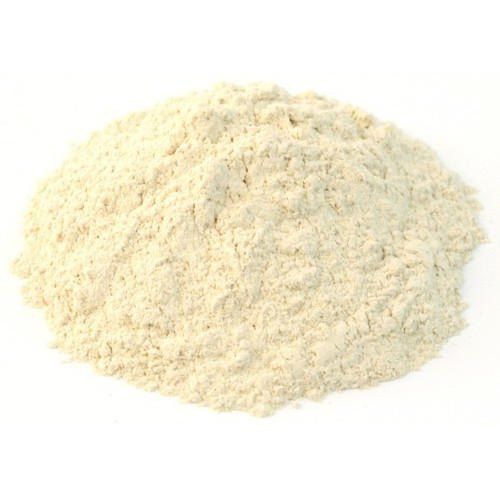Caffeic Acid Powder (20 g)
- Caffeic Acid is a polyphenol that is naturally found in many foods and most plants, the most concentrated of these including coffee, wine, turmeric, thyme, oregano, basil, cabbage, apples, strawberries, pears, radishes, mushrooms, cauliflower, among others. The richest source of caffeic acid humans is in coffee, and despite the similarity in their names, caffeic acid and caffeine are unrelated.Caffeic acid is a very potent antioxidant and anti-inflammatory ingredient, which is why it is highly sought after in skincare formulations. In low concentrations, caffeic acid has also been found to provide a skin lightening/whitening effect. There may also be some evidence that caffeic acid can protect the skin against damage from the sun.
This caffeic acid has been assayed at 98.78%pure.It is soluble in ethanol For skin lightening purposes, caffeic acid should be used at a final concentration between 0.5-2% in your formulations.This is intended for use in skincare formulations only and should not be directly applied to skin, consumed, or used internally any other way.
Caffeic Acid Powder is a naturally occurring phenolic compound that is widely used in various industries, including cosmetics and skincare. It is a type of polyphenol, which are powerful antioxidants known for their ability to neutralize free radicals and protect the skin from oxidative stress. Caffeic acid is found in a variety of plant-based sources, including coffee, fruits, vegetables, and certain herbs.
Chemical Structure:
Caffeic acid is a hydroxycinnamic acid and has the chemical formula C9H8O4. Its structure consists of a benzene ring with two hydroxyl (-OH) groups and a carboxyl group (-COOH), along with a vinyl group (-CH=CH2) attached to the ring.
Sources:
Caffeic acid is found naturally in several foods and plants:
- Coffee (the most common source)
- Fruits (like apples, grapes, and berries)
- Vegetables (such as carrots, potatoes, and tomatoes)
- Herbs (such as sage, thyme, and mint)
- Honey
- Olive oil
In skincare, caffeic acid is often extracted from these natural sources to harness its powerful antioxidant and anti-inflammatory properties.
Key Benefits of Caffeic Acid Powder in Skincare:
- Antioxidant Properties: Caffeic acid is a potent antioxidant that neutralizes free radicals—unstable molecules that can damage skin cells and accelerate the aging process. By reducing oxidative stress, caffeic acid helps prevent premature aging, such as fine lines, wrinkles, and sagging skin.
- Anti-inflammatory: Caffeic acid has strong anti-inflammatory properties, making it useful in calming irritated or inflamed skin. It can help soothe conditions like acne, rosacea, and sensitive skin by reducing redness and swelling.
- Brightening and Hyperpigmentation: Caffeic acid can help brighten the skin and reduce the appearance of dark spots, hyperpigmentation, and uneven skin tone. It works by inhibiting the production of melanin (the pigment responsible for skin color), which can help in treating age spots, sunspots, and post-inflammatory hyperpigmentation.
- Skin Firming and Anti-aging: Caffeic acid stimulates collagen production, which helps improve skin elasticity, resulting in firmer and more youthful-looking skin. Increased collagen also helps to reduce the appearance of fine lines and wrinkles.
- Antibacterial and Antifungal: Due to its antimicrobial properties, caffeic acid can help in fighting off bacteria and fungi, which is beneficial for acne-prone skin and helps prevent breakouts.
- Photoprotective: Caffeic acid has been found to have some photoprotective qualities, meaning it can help protect the skin from UV damage. This makes it a useful ingredient in products designed to prevent sun damage and environmental stress.
- Hydrating: Caffeic acid can also enhance the skin's moisture content, keeping it hydrated and improving overall skin texture. This can help to soften dry or rough skin and provide a smoother, more supple appearance.
How It Works:
Caffeic acid exerts its effects through its antioxidant, anti-inflammatory, and antimicrobial actions. When applied to the skin, caffeic acid scavenges free radicals and neutralizes their harmful effects, preventing oxidative damage to cells and tissues. It also modulates the production of inflammatory cytokines, which helps to reduce inflammation and irritation. In terms of brightening, caffeic acid affects the synthesis of melanin, which can lighten areas of hyperpigmentation.
Usage in Skincare:
- Serums and Creams: Caffeic acid powder can be dissolved into water-based serums and creams to harness its antioxidant and anti-inflammatory effects. It is often incorporated into formulations for sensitive or aging skin.
- Masks: Caffeic acid is sometimes included in face masks due to its ability to brighten the skin and reduce pigmentation.
- Exfoliants: Due to its ability to reduce pigmentation and soothe the skin, caffeic acid may also be used in exfoliating products that aim to improve skin texture and tone.
- Sun Protection: Some sunscreens and sun protection products contain caffeic acid to help protect against UV damage while providing anti-inflammatory effects.
How to Use Caffeic Acid Powder:
- Preparation: Caffeic acid powder is typically water-soluble (hot water can dissolve more than 40 degrees )based formulations. It can also be combined with other active ingredients like hyaluronic acid, vitamin C, and niacinamide for enhanced results.
- Concentration: The recommended concentration of caffeic acid in skincare products typically ranges from 0.5% to 2%, depending on the formulation. Higher concentrations may be more effective but can also increase the risk of irritation, so it’s important to test products first.
- Combination with Other Ingredients: Caffeic acid can be combined with other antioxidants (like vitamin C or E) for enhanced anti-aging and skin-protecting benefits. It pairs well with ingredients like hyaluronic acid for hydration or retinol for anti-aging effects.
Skin Types and Suitability:
- Sensitive Skin: Caffeic acid is generally well-tolerated by most skin types, including sensitive skin, thanks to its soothing anti-inflammatory effects. However, those with extremely sensitive skin should conduct a patch test before using.
- Oily/Acne-prone Skin: Its antimicrobial and anti-inflammatory properties make it particularly beneficial for acne-prone skin, helping to reduce inflammation and fight bacteria that contribute to breakouts.
- Dry Skin: Caffeic acid can help hydrate the skin and improve moisture retention, which can be beneficial for those with dry or dehydrated skin.
.
Conclusion:
Caffeic acid powder is a highly beneficial ingredient in skincare, offering antioxidant, anti-inflammatory, antimicrobial, and brightening effects. Its ability to protect the skin from oxidative stress, reduce hyperpigmentation, promote collagen synthesis, and soothe inflammation makes it a valuable addition to anti-aging, brightening, and acne-fighting products. It is gentle enough for most skin types, including sensitive skin, and can be combined with other active ingredients to enhance its effects.

